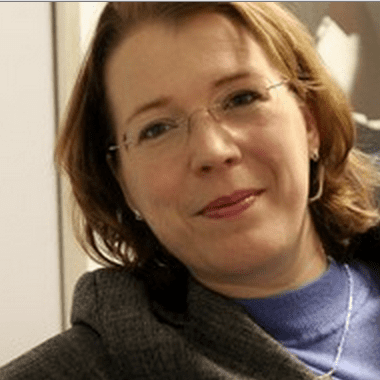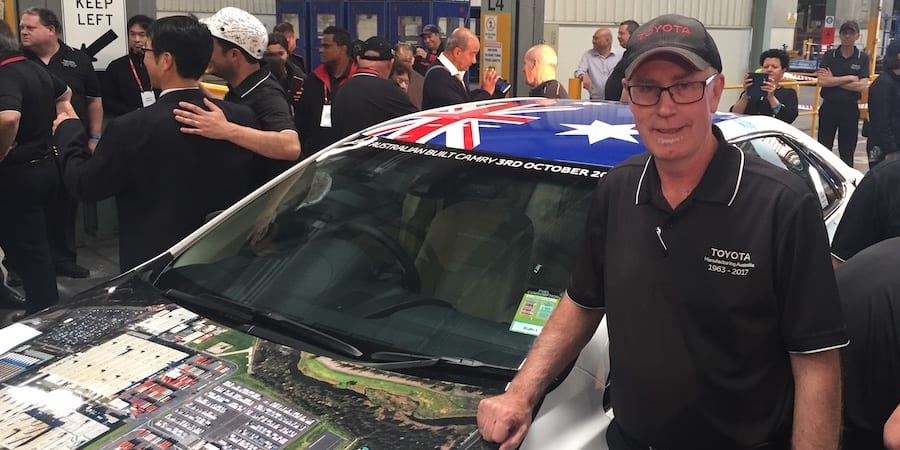
Knowledge-building for lean: a profile of Sari Torkkola
PROFILE - When years of hard work to re-organize Patria's IT operations led to disappointing results, Sari Torkkola didn't throw in the towel. Instead, she started to build her department's understanding of lean.
Words: Roberto Priolo, Editor, Planet Lean
Profile on: Sari Torkkola, Chief Information Officer, Patria
In December 2015, Sari Torkkola published her first book, Lean asiantuntijatyön johtamisessa, which roughly translates into “Managing expert work with lean”.
As the Chief Information Officer of Finnish defence and aerospace company Patria, over the past five years Torkkola has gained valuable experience in how to initiate and manage lean change. In her book, the transformation of Patria’s IT department (and of Torkkola’s leadership style) is written as a suspense story complemented with practical lean tools and methods.
“People seem to have liked it a lot,” Torkkola said during a recent phone interview (just last week the book won the accolade of Business Book of the Year 2016 in Finland, awarded by publisher Alma Talent Pro). “I think it’s because it is giving them hope that another way is possible. The problems we had at Patria are the same that every other organization experiences, and showing how we solved them boosts people’s confidence in their own ability to achieve change.”
Torkkola earned a degree in Computer Sciences in 1993. For 10 years she worked as a consultant in the area of IT security (that was the first time she got interested in how to effectively deliver services), until – in 2004 – she joined Patria with the task of creating a centralized, group-wide IT function. Two years later, she became CIO – a title that previously didn’t exist in the company.
She and her team worked hard on the goal, implementing ITIL standards, centralizing teams, and harmonizing Patria’s IT systems. Even though they had seemingly done everything by the book, at the end of initiative internal customers started to complain that the service IT department provided still didn’t match their expectations and staff appeared burnt out.
Torkkola was in shock.
She said: “For years I thought that with the new system up and running things would get better. Instead, we got chaos. I am not going to lie, I felt disappointed and frustrated – all the work we had done wasn’t achieving our goal.”
That’s when Torkkola began to look for something new, a path that would soon lead her to lean thinking. She first heard about the methodology at an IT seminar organized by a former colleague of hers, whom she knew from her consulting years. It was rather fortuitous, because Torkkola only joined the session on lean when her colleague asked her to (she feared nobody would go because the original speaker had just cancelled, at the last minute, forcing her to find a replacement).
The speaker who stepped in was Tuomas Syrjänen, the CEO of local IT company Futurice. He told the story of how his organization won the “Great Place to Work” award in Finland for several years in a row and how that achievement was the result of a transformed culture. “We were told customers loved them and that the business was growing a lot,” Torkkola recalled. “All the things I didn’t have! He then told us that his management style was based on lean thinking. That was the first time I heard that word, but at least at first none of that made sense to me. Yet, I had to believe him… after all, it was his company, and his money!”
Torkkola wanted to understand how Syrjänen had practically transformed his business, but before she did that she spent a few months reading several books on lean thinking. She even started to run a few small experiments, and when the first results came in she went to knock on Syrjänen’s door to ask for his help. He was happy to provide guidance, and the advice she got from him is something Torkkola still talks about very fondly. (Together with lean IT expert Steve Bell, Syrjänen is one of her lean role models.)
Once the transformation began in earnest, the whole mindset within Patria’s IT department started to shift. A critical moment was when Torkkola stopped talking about “plans” and began to talk about “experiments” instead. “Emotionally, that changed everything,” she explained. “In that moment, we gave people the permission to fail.”
A3 training was provided to everybody in the organization, with review sessions organized regularly. With A3s hanging to the walls, it became clear to people that management was being transparent (once the initial resistance disappeared), acknowledging problems for the first time.
Yet, that’s not the biggest way in which lean changed Torkkola. She now focuses on asking the right questions rather than having all the answers. Her approach is based on coaching, and she doesn’t think of herself as a fixer anymore.
The transformation is paying off, and the results keep coming in. Torkkola said: “Of all the things we did, lean has been by far the most effective. I have never done anything that gave us so many great results, year after year. I am very proud of what we achieved as a team! At the same time, I have never experienced resistance this intense and aggressive.”
ELIMINATING FEAR, INCREASING KNOWLEDGE
It is interesting to see how, before asking that CEO for help, Torkkola wanted to make sure she had enough knowledge on her side. And knowledge is in fact a word that she repeats often. When I asked her to list the traits of a good lean leader, she immediately said: “Perseverance, the courage to drive change and, above all, knowledge.”
For her, gathering information and data to increase her understanding of a situation seems to be an automatic reflex. She did this before asking for help when her lean journey was starting, and she still does it every time she is not sure how to approach an issue.
For example, when she realized that lean doesn’t only push people out of their comfort zones (for engineers at Patria IT, for instance, getting into the habit of leaving their desks to have stand-up meetings was hard) but also touches their deepest feelings, she reacted by buying a bunch of books on psychology.
She read about change, trust, and fear. She commented: “I am an engineer, and engineering and human sciences don’t exactly go hand in hand. The last thing I thought I’d have to do as a CIO is reading about psychology! It is fair to say that mine has been quite the journey.”
Her readings have taught her that fear makes people behave irrationally, and encouraged her to focus on removing it. “I work hard to take the fear out of the workplace. When I talk to people these days, I try to think of what they might be afraid of,” she said. To Torkkola, knowledge represents an effective way to remove fear from Patria’s IT department. Data and metrics give us an immediate overview of the current state and take uncertainty – which breeds fear – out of the equation. She continued: “Lack of knowledge creates fear. Lean has given people the data and tools they need to do their job properly, without being afraid of making mistakes. It has made our lives easier because it has given us control of the work.” Increasing transparency and feedback has also had a very positive impact on the atmosphere in the department.
In an organization, a shift occurs whenever management starts talking about experiments rather than plans, and that’s exactly what Patria IT experienced. “It is a completely different way of framing the discourse,” Torkkola commented. “An experiment is, by definition, something that you try, with the idea of learning from the outcome – whether or not it is a positive one. Lean is all about running bounded experiments that gradually build up our understanding of a situation and our ability to improve it.”
Before we said goodbye, I asked Torkkola what in her mind makes her lean journey interesting. She thought for a second, and then said: “We introduced lean in IT at a time when nobody was doing it in this area, which made things really difficult at first. To be in the crisis we were in and to try something completely new was an intense experience, and I am sure many thought we were crazy. But we tried something different and it worked, thanks to our commitment and determination to always build our body of knowledge and to find ways to continuously learn and improve.”
PROFILE ON:

Sari Torkkola has been CIO of the Finnish defense and aerospace company Patria since 2006. During the past 3 years, the systematical application of Lean principles has transformed her from a manager into a leader and her team from a bunch of stressed individuals to an example of operational excellence working with joy. She currently shares her Lean insights in public and private seminars and writes in the TOP100 CIO blog in Finland.
Read more


INTERVIEW - In our search for the perfect solution, we often seem to ignore the user's needs. Jeff Gothelf explains why this is nonsense and what lies at the heart of the Lean UX software development methodology.


INTERVIEW – PL speaks to one of America's leading experts on the Toyota Production System about Toyota's unique approach to integrating product development with all other functions in the business.


PROFILE – What does one learn from working for Toyota over 40 years? This Australian leader has developed a unique holistic view, and a strong set of technical and social skills.


INTERVIEW – Brian Swain, Director of the Lean Construction Institute UK, has supported some of the largest construction projects in Britain, including London’s Olympic Village. Here he talks about the evolution of lean in the industry.

